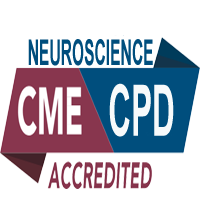
Shivam Bansal
AIIMS, India
Title: Assessment of Autonomic Function during Ictal and Interictal Period of Migraine
Biography
Biography: Shivam Bansal
Abstract
Background:
Studies suggest a degree of autonomic dysfunction which gets implicated in pathophysiology of migraine but none has ever commented on differences among ictal and interictal (headache free) period of migraine. Therefore this pilot study aims at assessing and comparing autonomic function during ictal and interictal period.
Methods and Materials:
Patients with migraine according to ICHD 3rd edition β version criteria were recruited for the study. Tests of sympathetic function (beat to beat blood pressure changes in Head-Up-Tilt test) and parasympathetic function (heart rate responses to Deep Breathing and Valsalva Manoeuvre) were performed, each during ictal and interictal period. The results of the ictal period were then compared with that of interictal period.
Results:
Ten patients [Eight female (80%), 20-58 years, mean 34.6] were studied. Nine patients (90%) showed Expiration:Inspiration [E:I] ratio {Ratio of maximum RR interval during expiration phase with minimum RR interval during inspiration phase} in Deep Breathing test below 1.24 and four patients (40%) showed 30:15 ratio {Ratio of RR interval during 30th heart beat with that during 15th heart beat} in Head-Up-Tilt test below 1.04, thus indicating significantly higher vagal response. These results were in ictal period. All patients exhibited normal parasympathetic response during interictal period and intact sympathetic function during both ictal and interictal periods.
Conclusion:
Subjects with migraine had vagal hyperactivity and intact sympathetic function during ictal period, whereas no abnormality was found during headache free period. This study provides newer insight into the pathophysiology of a migraine attack which may lead to further studies with new therapeutic approaches.

